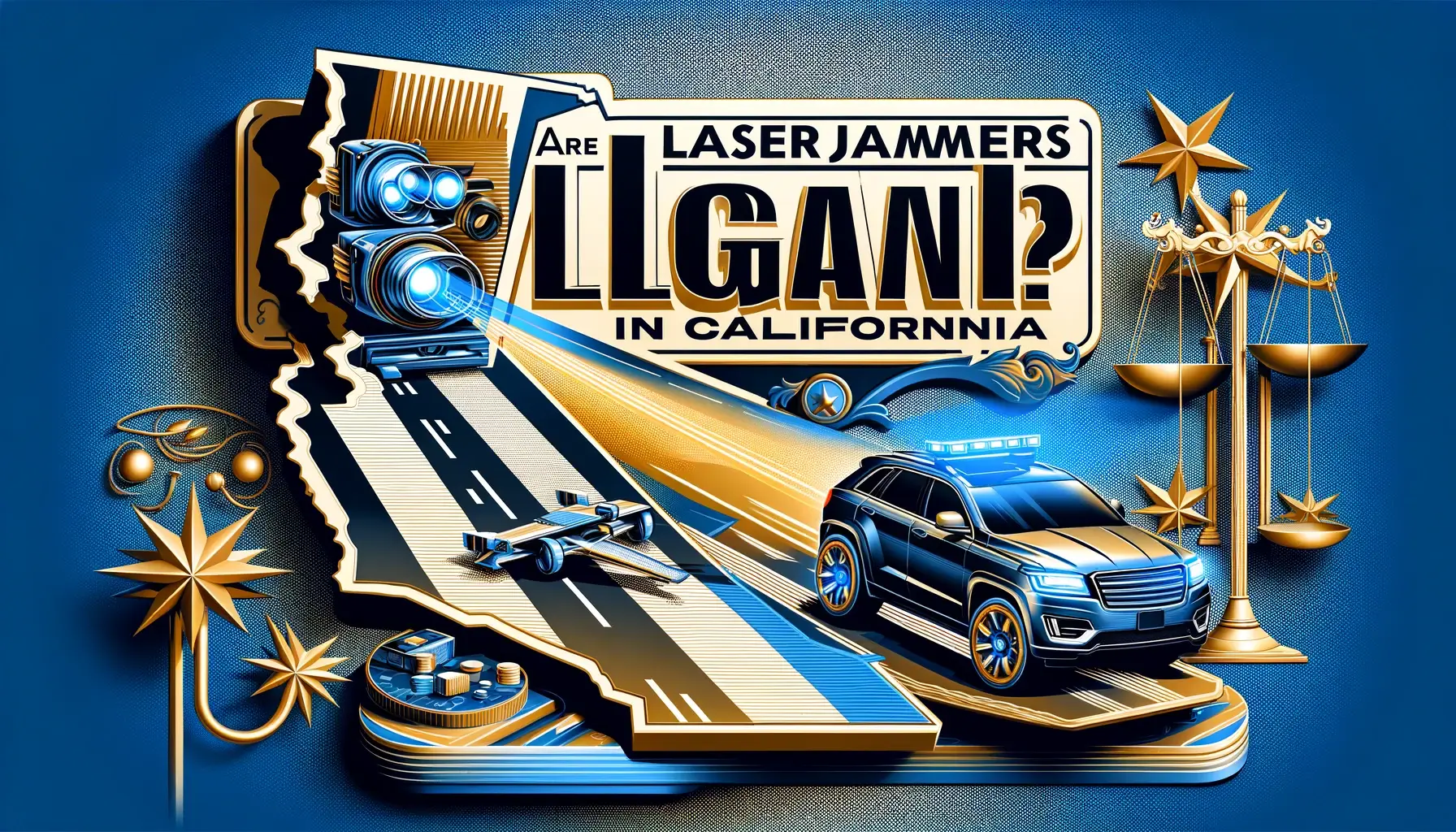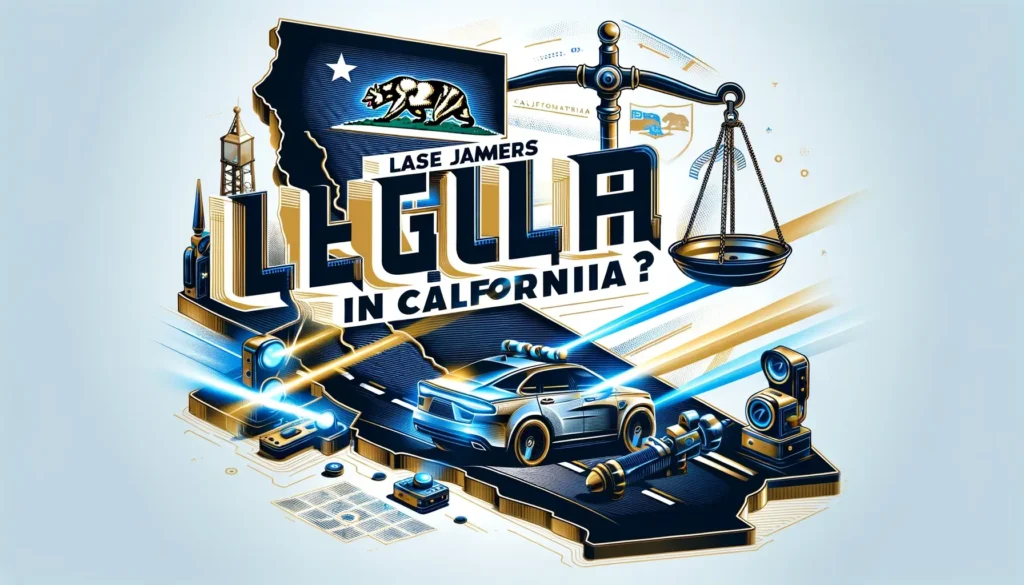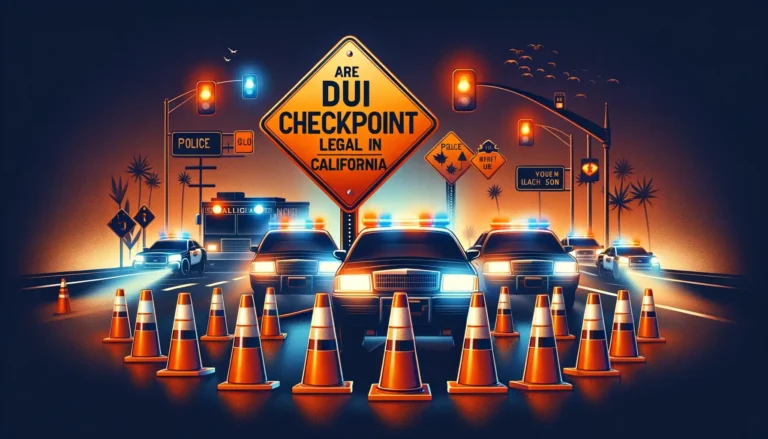Are Laser Jammers Legal in California? The Facts You Need to Know

Driving over the speed limit is illegal, but many drivers still do it to get to their destination faster. To avoid speeding tickets from law enforcement using radar or laser speed guns, some drivers use devices called laser jammers. But are laser jammers legal in California?
The short answer is no, laser jammers are generally prohibited in California under Vehicle Code 28150. This post will cover the facts about the legality of laser jammers in the state, exceptions to the law, pros and cons of using them, alternative options, real-world examples, and frequently asked questions.
By the end, you’ll have a thorough understanding of California’s stance on laser jammers and be able to make an informed decision about whether using one is worth the risks.
What Are Laser Jammers and How Do They Work?
A laser jammer is a small electronic device that can be mounted on a vehicle. Its purpose is to detect when a laser speed gun (like those used by police) is being aimed at the vehicle and then send out focused light signals to interfere with and prevent an accurate speed reading.
Unlike regular radar detectors that simply alert drivers to the presence of speed monitoring, laser jammers actively disrupt and “jam” the laser signal before it can measure the vehicle’s speed. This ideally allows drivers to avoid getting clocked for speeding violations.
The Legality of Laser Jammers in California
California Vehicle Code 28150
The key law regulating laser jammers in California is Vehicle Code Section 28150, which states:
(a) No vehicle shall be equipped with any device that is designed for, or is capable of, jamming, scrambling, neutralizing, disabling, or otherwise interfering with radar, laser, or any other electronic device used by a law enforcement agency to measure the speed of moving objects.
(b) No person shall use, buy, possess, manufacture, sell, or otherwise distribute any device that is designed for jamming, scrambling, neutralizing, disabling, or otherwise interfering with radar, laser, or any other electronic device used by a law enforcement agency to measure the speed of moving objects.
The law explicitly makes it illegal to equip a vehicle with a laser jammer or similar device designed to interfere with police speed-measuring equipment. It’s also prohibited to use, purchase, sell, or possess such devices in general.
Violating this section is typically treated as an infraction (minor violation) with fines. However, possession of four or more jamming devices elevates the offense to a misdemeanor, which can potentially result in jail time and higher fines.
Exceptions for Certain Vehicle Types
While the main law restricts laser jammers across the board, some exceptions impose extra prohibitions for certain vehicle types:
Commercial Vehicles Over 10,000 lbs: Laser jammers cannot be installed or used in commercial motor vehicles weighing over 10,000 lbs, such as trucks and buses. This additional restriction aims to enhance safety by preventing commercial drivers from speeding.
Taxis and Rideshare Vehicles: The law also explicitly bans taxi drivers as well as Uber, Lyft, and other rideshare drivers from using laser jammers when transporting passengers. The rationale is to discourage unsafe speeding by these professional drivers.
Military Bases: Even if you are legally allowed to have a laser jammer installed in your vehicle, you cannot use or have it active when driving through a military base or operation.
Pros and Cons of Using Laser Jammers
Like many other devices and technologies, laser jammers have both potential upsides and downsides to consider:
Potential Benefits
Avoiding Speeding Tickets: The primary motivation for using a laser jammer is to prevent getting expensive speeding tickets from law enforcement. This can save drivers significant money over time.
Promoting Safer Driving Habits: Knowing a laser jammer is active may encourage some drivers to obey speed limits more strictly to avoid being pulled over and having their jammer detected.
Cost Savings Over Tickets: A quality laser jammer system can cost several hundred dollars, but that’s still typically less than paying for just a couple of speeding violations.
Risks and Downsides
Legality Issues and Penalties: As outlined earlier, using laser jammers is illegal in California and can result in fines or misdemeanor charges if caught with multiple devices.
Interference With Legitimate Enforcement: Laser jammers undermine law enforcement’s ability to monitor vehicle speeds and enforce traffic laws designed to keep roads safe.
Potential Invalidation of Insurance Claims: If you get into an accident while speeding, the fact that you have a laser jammer installed could potentially be used as evidence of negligent driving and allow insurers to deny claims.
Alternative Legal Options
Rather than using an illegal laser jammer, California drivers have other options to consider:
Radar/Laser Detectors
While active jamming devices are prohibited, radar and laser detectors are legal in California as long as they don’t interfere with speed monitoring equipment. These passive sensors simply alert you to the presence of radar or laser speed guns.
Detectors give you a chance to check your speed and slow down before getting clocked but don’t offer guaranteed protection like jammers. Higher-end detector systems can be very effective though.
Defensive Driving Techniques
The safest and most legal approach is to practice defensive driving habits that reduce your risk of speeding tickets:
- Always follow posted speed limits
- Keep a safe following distance from other vehicles
- Be vigilant in areas where police are known to monitor speeds
- Avoid aggressive acceleration from stops
While not as convenient as using prohibited jamming devices, law-abiding driving is ultimately the most responsible choice.
Real-World Examples and Advice
Based on accounts from California drivers who have used laser jammers in the past, here are some real-world examples and advice:
A driver in Los Angeles installed laser jammers discretely in his front grill and never had issues over several years until eventually removing them.
A San Diego commuter was pulled over after a police laser briefly picked up her jammer. She received a $300 ticket as a first offense since she only had one jammer installed.
Drivers recommend keeping jammers properly aimed, using a laser detector to know when to turn them on briefly, and quickly deactivating them after a couple of seconds of jamming.
Many stress the importance of driving responsibly and not over-relying on jammers to excuse reckless speeding behavior.
The consensus seems to be that while illegal, laser jammers can be used responsibly with discrete installations and quick reactions to avoid major penalties. However, the risks remain significant.
FAQ on Laser Jammers in California

Let’s cover some frequently asked questions about this topic:
Are radar detectors legal in California?
Yes, unlike laser jammers, radar detectors are legal in California as long as they don’t interfere with police equipment.
Can I get jail time for a first offense with a laser jammer?
It’s very unlikely you’d get jail time for a first offense unless you had multiple jammers installed. More probable penalties are fines or just a warning.
Do cops know how to identify laser jammers?
Most officers are familiar with the concept of laser jammers and how to detect them disrupting their speed readings. However, identifying small, discrete jammer heads visually can be difficult.
Are higher-end laser jamming systems like Blinder or AntiLaser Priority more effective?
More expensive jammer systems like those tend to be higher quality with better sensors, faster jam pulsing, and other capabilities that can improve their effectiveness at disrupting speed readings.
Is it safe to travel to other states with laser jammers installed?
No, it’s wise to disable or remove laser jammers entirely before crossing state lines, as their legality varies across the country.
Conclusion
While laser jammers offer the potential benefit of avoiding speeding tickets, their use is illegal for most California drivers under Vehicle Code 28150. Breaking this law can result in fines or misdemeanor charges, especially for commercial vehicle operators or rideshare drivers.
There are some alternative legal options like radar detectors or defensive driving techniques, but none are as assured as an effective laser jammer at preventing speed readings. Many drivers still choose to use jammers discreetly despite the legal risks.
Ultimately, it’s up to each individual to weigh the pros and cons and decide whether using a laser jammer is worth the potential penalties and other downsides in California. If you have specific legal questions, it’s advisable to consult a qualified traffic laws attorney.






